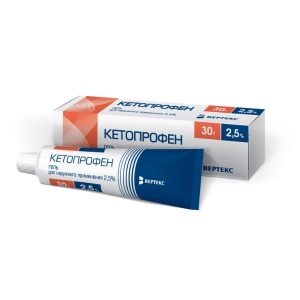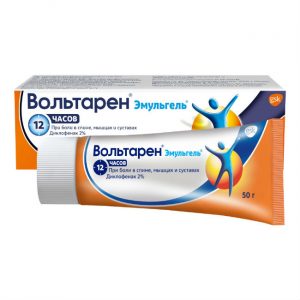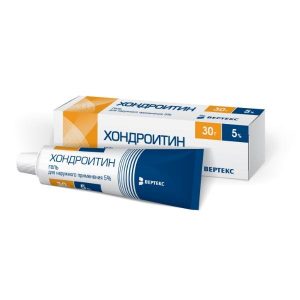Description
Latin name
ORTOPHEN
Pharmacological action
Ortofen is a non-steroidal anti-inflammatory drug (NSAID), a derivative of phenylacetic acid. It has a pronounced anti-inflammatory, analgesic and moderate antipyretic effect. The mechanism of action is associated with the inhibition of COX activity – the main enzyme of the metabolism of arachidonic acid, which is a precursor of prostaglandins, which play a major role in the pathogenesis of inflammation, pain and fever. The analgesic effect is due to two mechanisms: peripheral (indirectly, through the suppression of prostaglandin synthesis) and central (due to inhibition of prostaglandin synthesis in the central and peripheral nervous system).
Inhibits proteoglycan synthesis in cartilage.
In rheumatic diseases, it reduces joint pain at rest and during movement, as well as morning stiffness and swelling of the joints, contributes to an increase in range of motion. Reduces post-traumatic and postoperative pain, as well as inflammatory edema.
Suppresses platelet aggregation. With prolonged use it has a desensitizing effect.
When applied topically in ophthalmology, it reduces swelling and pain in inflammatory processes of a non-infectious etiology.
Pharmacokinetics
After oral administration, it is absorbed from the digestive tract. Eating slows down the rate of absorption, the degree of absorption does not change. With rectal administration, absorption is slower. Does not cumulate. Penetrates into the synovial fluid. It is metabolized to a significant degree with the formation of several metabolites, among which two are pharmacologically active, but to a lesser extent than diclofenac. Approximately 60% of the dose is excreted in the form of metabolites by the kidneys, less than 1% is excreted in the urine unchanged, the rest is excreted in the form of metabolites with bile.
Contraindications
Hypersensitivity, including to other NSAIDs, peptic ulcer of the stomach and duodenum in the acute phase, allergic asthma, rhinitis, urticaria, children under 6 years of age.
Use during pregnancy and lactation
Contraindicated (especially in the third trimester of pregnancy).
During the treatment period, nursing mothers should abandon breastfeeding.
Composition
Active ingredient:
diclofenac
Dosage and administration
Outwardly, 24 g of ointment is applied in a thin layer to the painful area 3-4 times a day. The maximum daily dose is 8 g. The course (individual) is 1-14 days.
Side effects
Epigastric pain, belching, nausea, vomiting, diarrhea, dizziness, headache, skin allergic reactions, increased blood pressure.
Drug Interactions
With the simultaneous use of antihypertensive drugs with Ortofen, their effect may be weakened.
There are few reports of seizures in patients who took NSAIDs and antibiotics of the quinolone series at the same time.
When used concurrently with glucocorticosteroids (GCS), the risk of side effects from the digestive system is increased.
With the simultaneous use of diuretics, a decrease in the diuretic effect is possible. With simultaneous use with potassium-sparing diuretics, an increase in the concentration of potassium in the blood is possible.
When used concomitantly with other NSAIDs, an increased risk of side effects is possible.
There are reports of the development of hypoglycemia or hyperglycemia in patients with diabetes who used Ortofen concurrently with hypoglycemic drugs.
With simultaneous use with acetylsalicylic acid, a decrease in the concentration of diclofenac in blood plasma is possible.
Although clinical studies have not established the effect of diclofenac on the action of anticoagulants, some cases of bleeding have been described with the simultaneous use of diclofenac and warfarin.
With simultaneous use, an increase in the concentration of digoxin, lithium and phenytoin in the blood plasma is possible.
Absorption of diclofenac from the gastrointestinal tract decreases with simultaneous use with colestyramine, to a lesser extent – with colestipol.
With simultaneous use, it is possible to increase the concentration of methotrexate in blood plasma and increase its toxicity.
With simultaneous use, Ortofen may not affect the bioavailability of morphine, however, the concentration of the active metabolite of morphine may remain elevated in the presence of diclofenac, which increases the risk of side effects of the morphine metabolite, including respiratory depression.
With simultaneous use with pentazocine, a case of the development of a large convulsive seizure with rifampicin is described – a decrease in the concentration of diclofenac in plasma with ceftriaxone is possible – excretion of ceftriaxone with bile with cyclosporine is increased – cyclosporin nephrotoxicity may increase.
Storage conditions
At a temperature not exceeding 25 ° C.
Term hodnosty
2 years
Active ingredient sr dlkp Diclofenac
Pharmacy terms
Overnight
Form of Treatment
claim the gel dlya naruzhnogo primeneniya
Vertex, Russia




